Introduction to Premium Paints
Premium paints represent a higher echelon in the world of coatings, distinguished by their exceptional quality and performance. Unlike standard paints, premium variants offer enhanced attributes that set them apart in terms of durability, finish, and overall aesthetic appeal. One of the primary differentiators is the superior quality of raw materials used; high-grade pigments and advanced resin formulations ensure that premium paints deliver more vibrant colors and a more refined finish.
Longevity is another hallmark of premium paints. These products are engineered to withstand the test of time, resisting wear and environmental factors far better than their conventional counterparts. This extended lifespan means fewer repaints and touch-ups, making premium paints a cost-effective choice in the long run despite their higher initial cost. Additionally, premium paints often come with advanced features such as mildew resistance, stain resistance, and improved washability, enhancing their functionality in various settings.
This guide will delve into the multifaceted advantages of premium paints, providing a comprehensive understanding of what makes them superior. We will explore the different types of premium paints available in the market, from high-gloss finishes to eco-friendly options, addressing their unique characteristics and best-use scenarios. The blog will also cover essential application techniques to maximize the benefits of premium paints, ensuring that you’re equipped with the knowledge to achieve professional-quality results.
Furthermore, we will offer practical tips for selecting the right premium paint for your specific needs, factoring in considerations such as surface type, environmental conditions, and desired finish. Whether you’re a DIY enthusiast or a professional painter, this guide aims to provide valuable insights to help you make informed decisions and elevate your painting projects. As we journey through the various facets of premium paints, you’ll gain a deeper appreciation of their superior quality and the enduring benefits they bring to any paint job.
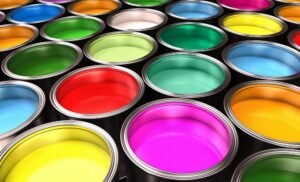
Types of Premium Paints
Premium paints encompass a wide range of formulations designed to maximize aesthetic appeal, durability, and utility. These offerings vary not only in their base components but also in their finish and specialized functions. Among the most commonly encountered distinctions are water-based and oil-based paints. Each type presents unique benefits and drawbacks, often influencing their suitability for specific applications.
Water-based paints, also known as latex paints, are renowned for their quick-drying properties and relatively low levels of volatile organic compounds (VOCs). This makes them an environmentally friendly option that is easier to clean up with soap and water. These paints are ideal for interior walls and ceilings, where quick application and low odors are advantageous. In contrast, oil-based paints, although slower to dry and requiring mineral spirits for cleanup, offer superior durability and a smoother finish. These characteristics make them particularly well-suited for high-traffic areas, trim, and furniture.
The finish of premium paint plays a crucial role in both its appearance and functionality. Matte finishes, for instance, create a non-reflective surface that is excellent for hiding wall imperfections, making them a go-to choice for older homes and ceilings. Satin finishes strike a balance between flat and glossy, providing a slightly lustrous look that is easy to clean, thereby fitting well in kitchens and bathrooms. Eggshell finishes offer a soft sheen that resists dirt and can be washed, making them appropriate for living rooms and dining areas. Gloss finishes, both semi-gloss and high-gloss, offer the highest level of shine and durability, suitable for trim, doors, and areas requiring frequent cleaning.
In addition to conventional premium paints, specialty formulations have emerged to cater to specific needs. Anti-microbial paints inhibit the growth of bacteria and mold, rendering them ideal for healthcare environments, kitchens, and bathrooms. Self-cleaning paints, often infused with nanoparticles, enable surfaces to shed dirt and grime with minimum maintenance, which is especially beneficial for exterior applications.
Choosing the right type of premium paint involves considering the specific requirements of the project. Whether prioritizing quick-drying, easy maintenance, aesthetic finish, or specialized functions such as anti-microbial protection, the diverse offerings of premium paints ensure a tailored solution for every need.
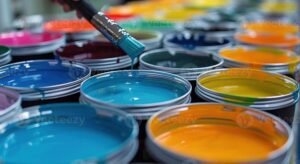
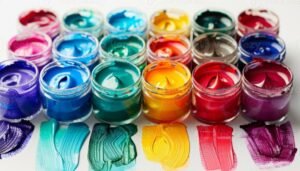
Benefits of Using Premium Paints
Premium paints offer a multitude of advantages that make them a preferred choice for both residential and commercial properties. One of the most notable benefits is their exceptional durability. Premium paints are formulated to withstand a greater degree of wear and tear, reducing the need for frequent repainting. This long-lasting quality is especially valued in high-traffic areas like hallways, offices, and public spaces.
Another significant advantage of using premium paints is their ease of application. High-quality paints generally have a smoother consistency and adhere better to various surfaces, making the painting process less labor-intensive and more efficient. This feature is particularly beneficial for professional painters who must meet tight deadlines without compromising on quality.
Superior coverage is yet another compelling reason to opt for premium paints. These products often have a higher concentration of pigments, which translates to better coverage with fewer coats. This efficiency not only saves time but also money on additional paint and labor costs. When it comes to color vibrancy and uniformity, premium paints clearly outshine their less expensive counterparts.
Eco-friendliness is an increasingly important consideration, and many premium paints are formulated to be low in volatile organic compounds (VOCs) and other harmful chemicals. This makes them safer for both the environment and the occupants of the painted spaces. The reduction in VOCs contributes to improved indoor air quality, a crucial factor for homes, schools, and healthcare facilities.
Expert opinions strongly endorse the use of premium paints for their superior performance. John Smith, a professional painter with over 20 years of experience, states, “The investment in premium paints more than pays off in the long run. From ease of use to durability and overall appearance, they deliver consistently outstanding results.”
These numerous benefits collectively contribute to the enhanced value of premium paints, making them a smart and reliable choice for any painting project.
Preparing Surfaces for Premium Paints
Ensuring that surfaces are adequately prepared before applying premium paints is a critical step to achieving the best possible results. Proper preparation significantly enhances the longevity and quality of the paint job, making the investment in premium paint worthwhile. The preparation process involves several key steps: cleaning, sanding, priming, and repairing any imperfections.
The first and foremost step is cleaning the surface to be painted. Over time, surfaces accumulate dust, dirt, grease, and other contaminants, which can affect paint adhesion. A thorough clean using a mixture of mild detergent and water removes these impurities. For tougher grime, a stronger cleaner or a pressure washer may be required. Proper cleaning ensures that the paint can bond effectively to the surface.
Once the surface is clean, the next step is sanding. Sanding helps to smooth out any uneven areas and provides a slightly rough texture that helps the primer and paint adhere better. Depending on the surface condition, sandpapers of varying grit levels can be used. Fine grit sandpaper is ideal for smooth surfaces, whereas coarse grit is useful for rougher areas. After sanding, it’s essential to remove the dust produced during the process, as it can interfere with paint adhesion.
Priming is another crucial step in preparing a surface for premium paint. Primer serves as a foundation layer that enhances paint adhesion, hides stains, and provides a uniform surface for the topcoat. It also helps to seal porous surfaces, preventing the paint from soaking in unevenly. For optimal results, the choice of primer should be compatible with both the surface material and the type of premium paint being used.
Lastly, repairing any imperfections in the surface, such as cracks, holes, or dents, is necessary to ensure a flawless finish. Use appropriate fillers or patching compounds to address these issues, and sand them smooth once they have dried. Addressing these imperfections before painting prevents them from becoming more evident after the paint is applied.
Overall, dedicating time and effort to proper surface preparation not only maximizes the aesthetic appeal of the paint job but also contributes to its durability and longevity.

Application Techniques for Premium Paints
Applying premium paints requires attention to detail and the right techniques to ensure a flawless finish. The choice of equipment plays a vital role in application success. Brushes, rollers, and sprayers each have distinct advantages and are suited for specific paint types and surfaces.
Brushes are ideal for detailed work and trim. They come in various shapes such as angled, flat, and oval, each catering to different needs. When using brushes, it’s crucial to load them correctly—dip about one-third of the bristles into the paint to avoid drips and ensure even application. Use long, smooth strokes to spread the paint and maintain a wet edge to prevent lap marks.
Rollers are perfect for covering larger areas quickly and uniformly. They come in different nap lengths, with shorter naps for smooth surfaces and longer naps for textured surfaces. To achieve a professional-level finish, start by pouring paint into a roller tray and evenly loading the roller. Apply the paint in a W or M pattern, then use vertical strokes to fill in the gaps, ensuring overlapping strokes to avoid missing spots.
Sprayers offer the fastest application and are beneficial for covering extensive areas or surfaces with intricate details. There are different types of sprayers, including airless, HVLP (High Volume Low Pressure), and compressed air sprayers. It’s essential to choose the correct sprayer for the type of paint and surface. Always back-brush or back-roll sprayed areas to assure even coverage and penetration.
Regardless of the tool, several tips can ensure a professional finish. Prepping the surface is a must; clean, sand, and prime as needed. Always work in manageable sections and maintain a wet edge to prevent overlapping marks. Use quality painter’s tape to achieve clean lines and protect adjacent surfaces. Lastly, avoid common mistakes such as overloading brushes or rollers, using old or worn tools, and neglecting manufacturer’s instructions.
Mastering these application techniques ensures that premium paints deliver their full potential in both aesthetics and durability.
Maintaining and Cleaning Painted Surfaces
Maintaining and cleaning surfaces coated with premium paints is essential for preserving their aesthetic appeal and extending their longevity. The first step in this process involves understanding the specific type of finish used: flat, satin, eggshell, semi-gloss, or high-gloss. Each finish has unique characteristics that dictate the most appropriate cleaning methods and agents.
For flat and matte finishes, which are more susceptible to wear and tear, avoid harsh scrubbing. Instead, use a soft cloth or sponge dampened with mild soapy water. Gently clean the surface, ensuring to rinse and dry it to avoid water streaks. Satin and eggshell finishes, offering a moderate sheen and enhanced durability, can withstand slightly more rigorous cleaning. A mixture of water and a few drops of dishwashing liquid usually suffices, complemented by soft, non-abrasive cloths.
Semi-gloss and high-gloss finishes are less porous and more resistant to moisture and dirt. These finishes can be cleaned more efficiently using a combination of warm water and a gentle detergent. They can also endure a bit more scrubbing, but it’s essential to use soft materials to prevent scratches.
When it comes to touching up damaged areas, first ensure the surface is clean. Lightly sand the damaged spot and dust off any debris. Apply the same premium paint originally used, feathering the edges to blend seamlessly with the surrounding area. It is advisable to keep a small amount of the original paint for such touch-ups.
Preventative measures significantly contribute to the longevity of painted surfaces. Regular dusting with a soft, dry cloth helps minimize the buildup of dirt and grime. Consider using protective pads or felt under furniture to prevent scratching. Also, minimizing direct sunlight exposure can reduce color fading over time.
Overall, maintaining and cleaning premium paint finishes require a combination of gentle yet effective techniques and preventive care. By following these guidelines, homeowners can ensure that their painted surfaces remain vibrant and intact, reflecting the quality and beauty that premium paints offer.
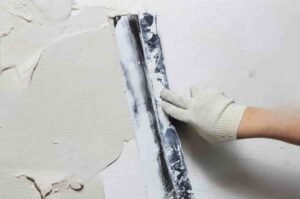
Choosing the Right Premium Paint for Your Needs
When selecting premium paint for your project, it’s essential to evaluate several critical factors to ensure optimal results. Understanding these variables will help you make an informed decision, resulting in a durable and aesthetically pleasing finish.
Environment Consideration: Interior vs. Exterior
One of the first considerations is whether your paint will be used indoors or outdoors. Premium interior paints are formulated to withstand scrubbing and the impact of daily household activities, offering excellent coverage and a wide range of finishes. Conversely, premium exterior paints are designed to endure varying weather conditions, providing resistance to UV radiation, moisture, and temperature changes.
Surface Type
Different surfaces require specific types of paint for optimal adhesion and durability. For instance, wooden surfaces may need a premium paint that includes priming agents, while metals could require rust-inhibitive properties. Masonry and stucco may benefit from paints that allow breathability to prevent trapped moisture from causing damage over time.
Personal Aesthetic Preferences
Your aesthetic goals significantly impact the type of premium paint you choose. Consider the color palette you desire and the finish that aligns with your vision. High-gloss finishes offer a sleek, modern look and are easy to clean, while matte finishes provide a rich and more subdued elegance. Semi-gloss and satin finishes often strike a balance, offering durability while maintaining some sheen.
Budget
Although premium paints are a more considerable investment upfront, their superior quality can result in long-term savings due to fewer touch-ups and longer-lasting finishes. Weighing the initial cost against the longevity and performance of the paint is crucial when working within a budget. High-quality paints also tend to cover surfaces more thoroughly, potentially reducing the amount of paint needed.
Checklist for Choosing Premium Paint
Before making your final decision, consider the following checklist:
- Is the paint intended for interior or exterior use?
- What type of surface will you be painting?
- What is your desired color and finish?
- What is your budget for this project?
- Are there any specific requirements for your surface or environment?
By addressing these questions, you can narrow down your options and select the premium paint that best suits your needs.
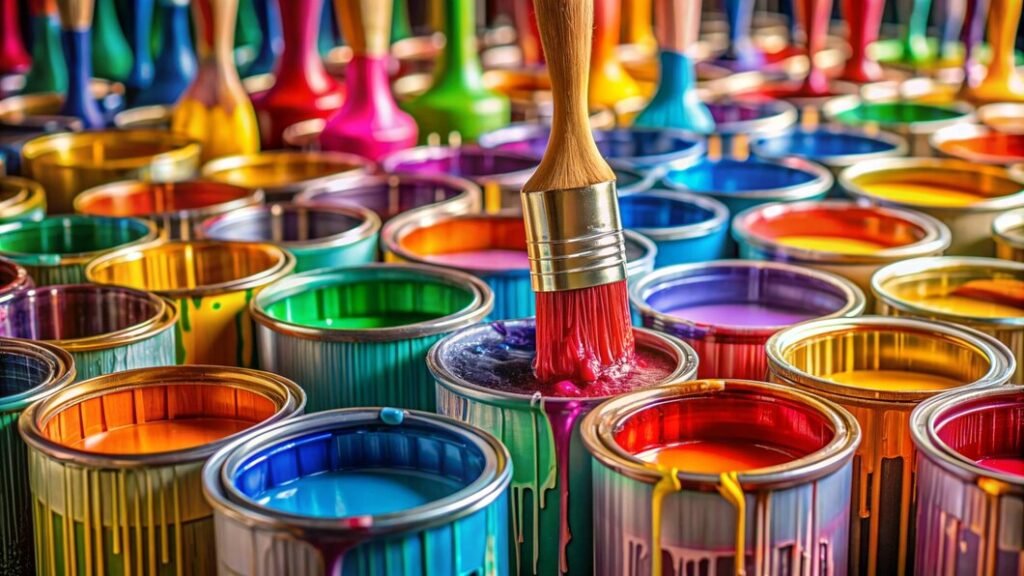
Expert Tips and Recommendations
When it comes to making the most out of premium paints, expert insights can substantially enhance your experience and results. To begin with, professional painters often emphasize the importance of surface preparation. According to industry veterans, ensuring a clean, smooth surface is paramount. This typically involves sanding uneven areas, repairing any damages, and thoroughly cleaning the space to remove dust and debris. Priming the surface is another crucial step, as it creates an ideal base for the premium paint to adhere, improving durability and finish.
Another key recommendation is to invest in quality brushes and rollers. Using high-end tools not only complements the quality of premium paints but also ensures a more consistent application. Experts suggest opting for brushes with fine, synthetic bristles for a smoother finish. Likewise, using lint-free rollers can make a significant difference in achieving a flawless application, devoid of streaks or roller marks.
Industry experts also recommend keeping abreast of the latest trends and innovations in premium painting products. For instance, advancements in paint technology have led to the development of eco-friendly options and formulations that offer better coverage, faster drying times, and enhanced resistance to stains and mildew. Staying informed about these developments can help you select paints that best meet your needs and contribute to a longer-lasting, more aesthetically pleasing finish.
When choosing products, endorsements from experienced painters can be immensely helpful. By selecting brands that professionals repeatedly trust, such as Benjamin Moore, Sherwin-Williams, or Behr, you can have confidence in the quality and performance of your paint. These brands offer a range of premium paints that cater to various requirements, whether you’re looking for superior washability, exceptional color retention, or environmental sustainability.
Finally, applying premium paint in proper environmental conditions cannot be overstated. Experts advise painting in temperatures that align with the manufacturer’s recommendations and maintaining a controlled humidity level. This careful attention ensures optimal drying and curing conditions, thereby maximizing the benefits of premium paints.
